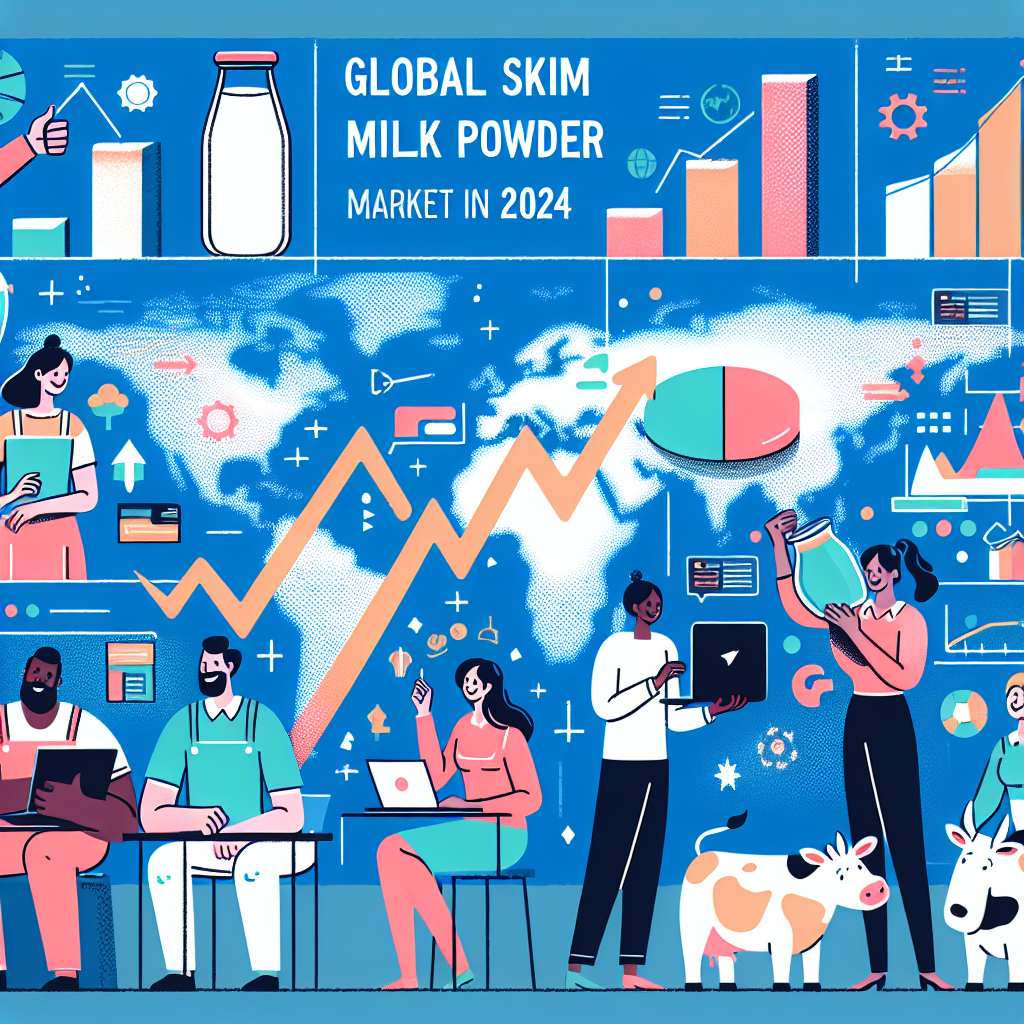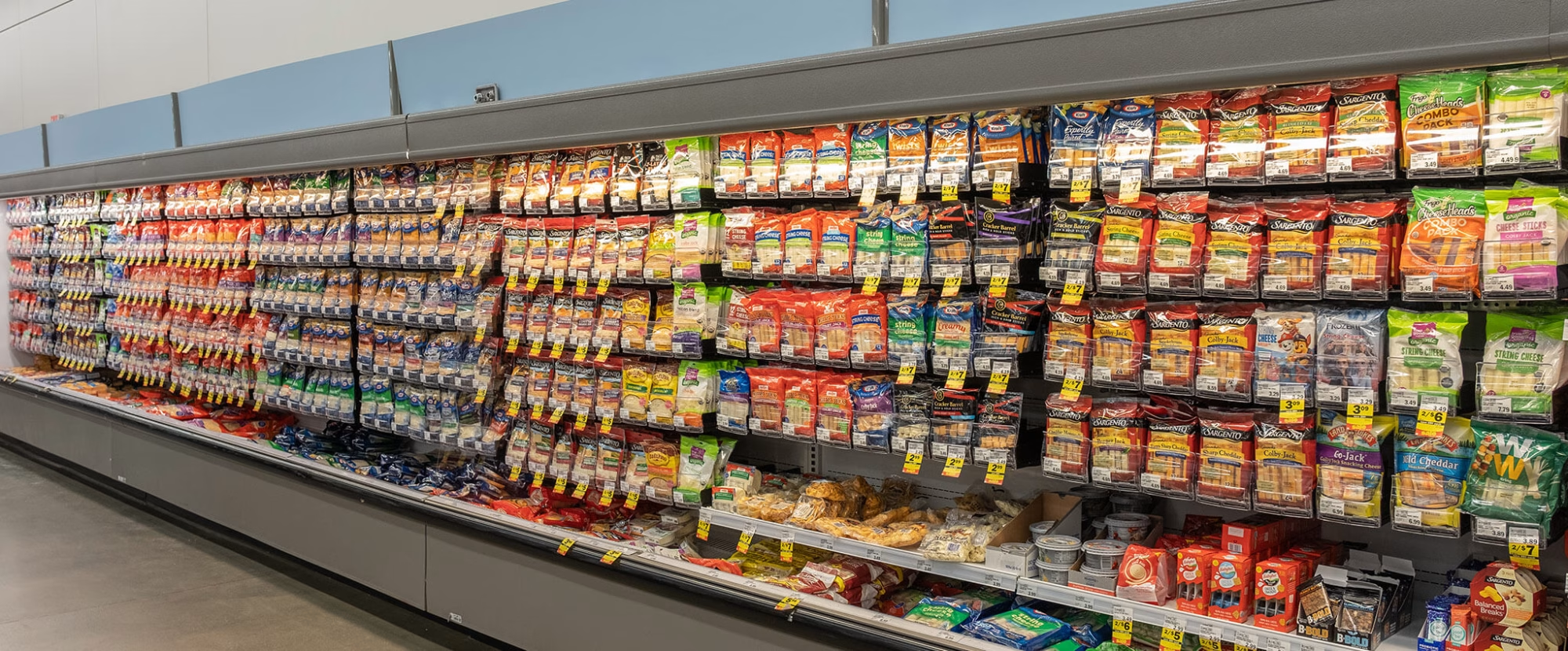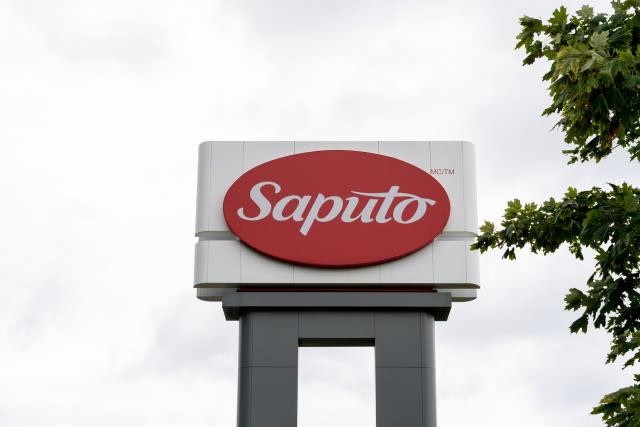How will 2024’s global skim milk powder trends impact your dairy farm? Are you ready for these changes and new opportunities?

The worldwide skim milk powder (SMP) industry is currently undergoing significant changes, influenced by various factors such as international trade dynamics, supply chain disruptions, and shifting dairy consumption trends. However, amidst these developments, the SMP industry presents a promising opportunity for substantial growth. Understanding these patterns is crucial for dairy producers, as SMP is a significant export commodity and a staple in home markets. This study will dissect the current state of the SMP industry, providing an overview of the main trends, opportunities, and challenges for 2024. Readers can expect a comprehensive understanding of how global market changes may impact their operations and decision-making processes, instilling a sense of optimism for the future.
Navigating Global SMP Market Diversification: A Closer Look at Key Players and Emerging Trends
The worldwide skim milk powder (SMP) industry is experiencing tremendous diversity and instability. Big players like the United States, New Zealand, and the European Union dominate the production landscape, with each area contributing significantly to the global supply chain. As of 2024, the United States alone is expected to generate an extra 1% of fluid milk, which may supplement its SMP supply. This gives American dairy producers an edge in fierce foreign competition.
However, Australia provides a different situation, with a predicted 1% rise in fluid milk output, indicating possible development in SMP exports. This favorable prognosis gives a light of optimism to market dynamics, notwithstanding the troubles encountered by other areas.
On the import front, rising Asian and Middle Eastern economies continue to have strong demand for SMP. This transition is driven by increased disposable incomes and shifting dietary choices favoring dairy-based goods. However, logistical challenges, particularly cross-border traffic congestion on important trade routes, offer substantial vulnerabilities and potentially disrupt supply chains if not managed correctly.
Modern market trends also show a rising customer preference for health-conscious goods, which has prompted producers to broaden their offers and concentrate on high-protein, low-fat dairy products. Sustainability practices are becoming more critical as customers and regulatory authorities strive for more environmentally friendly manufacturing processes, transforming global operating plans.
Understanding the Global Skim Milk Powder (SMP) Market in 2024: A Key to Navigating Dynamics, Challenges, and Opportunities
| Trend | Impact on Dairy Farms | Additional Insights |
|---|---|---|
| 11% growth in SMP output | Increased supply could pressure prices | Consider diversifying product offerings to manage market volatility |
| 3% increase in exports | Opportunities for U.S. dairy farms to expand market reach | Focus on enhancing export quality standards to stay competitive |
| Decline in milk production | Potential strain on SMP production and supply chain | Adopt efficient farming practices to mitigate production challenges |
| Weakened demand from Asia | Reduced export revenue for SMP | Explore alternative markets to offset demand fluctuations |
| Regulatory changes | Impact on inter-state commerce and market accessibility | Stay updated with policy changes and adapt quickly |
In 2024, the worldwide Skim Milk Powder (SMP) market is expected to undergo a dynamic transition driven by several crucial variables impacting supply and demand. Notably, the predicted 3% increase in butter output, driven by growing demand for high-fat dairy products, directly influences SMP supply. As more milk is directed toward butter and cheese production, the supply of SMP may tighten, putting upward pressure on pricing. However, the anticipated 1% rise in fluid milk output in the United States, which is expected to generate an extra 1% of fluid milk, may supplement its SMP supply, providing a marginal boost to milk available for powder manufacture. Understanding these characteristics is critical to making sound judgments in the SMP market.
Exports of SMP are expected to climb by 3% to 838,000 tonnes, demonstrating strong worldwide demand despite hurdles such as tariff uncertainty and changing trade policy. This predicted export expansion emphasizes the critical need to maintain competitive pricing and high-quality standards to gain and retain overseas markets.
Price predictions for dairy products in 2024 indicate a moderate 1 to 3 percent rise, putting SMP in a reasonably stable inflationary environment compared to other food categories. This steadiness, despite possible market turbulence, demonstrates the robustness of the SMP market. However, market volatility must be addressed, especially given legislative attempts to reduce greenhouse gas emissions and water consumption, which affect manufacturing costs. The formation of initiatives such as the Dairy Methane Action Alliance represents industry-wide efforts to align with global sustainability goals, which, while potentially increasing short-term expenses, aim to ensure long-term viability and market acceptance, providing reassurance about market stability.
By 2024, the SMP market will face supply challenges due to increased milk diversion to fat-based products and intense worldwide demand. Price stability, impacted by moderate inflation rates, changing regulatory environments, and intelligent international trade policies, will be critical in successfully navigating future market developments.
The Shifting Dynamics of the Global Skim Milk Powder (SMP) Market in 2024
The evolving dynamics of the worldwide Skim Milk Powder (SMP) market in 2024 will have significant consequences for the US dairy industry. These developments may be a double-edged sword, bringing possibilities and difficulties that need our full attention and deliberate response.
First, changes in export demand have a considerable impact. With nations like Australia dramatically increasing their cheese manufacturing capacity, competition in the global market heats up. This implies that we urgently need to improve our value proposition by enhancing product quality, broadening our offerings, and utilizing the “Made in the USA” brand to carve out a distinct niche. Understanding and aligning with global customer tastes may help us sustain a competitive advantage in the face of increasing competition.
The expected 1 to 3 percent rise in dairy product prices is a mixed bag. On the one hand, increasing pricing may boost profits, which is particularly important when operating expenses rise. However, price volatility remains a significant worry. Unpredictable pricing fluctuations strain our financial planning and jeopardize our long-term viability. This volatility could impact the SMP market, potentially leading to changes in demand and supply. Adopting solid financial strategies and hedging methods may reduce certain risks and provide a cushion against market swings.
Furthermore, when multinational companies increase output, there is a danger of market saturation. This could lead to increased competition and potentially lower prices in the SMP market. Identifying new markets and diversifying export destinations might assist in mitigating risk and minimizing reliance on old markets that may become oversupplied. Closer to home, there is a potential for innovation in our local market. Expanding value-added product lines, capitalizing on growing consumer preferences such as clean-label and high-protein alternatives, and improving supply chain efficiency all create significant domestic development opportunities.
Finally, empowering ourselves via invention and cooperation is both advantageous and essential. Forming cooperatives, investing in on-farm technology, and conducting joint research may all lead to on-farm solutions that improve productivity and sustainability. Staying current on global trends and being proactive rather than reactive will be critical in navigating these turbulent seas.
While the worldwide SMP market in 2024 will have unique difficulties, it will also provide opportunities for those willing to pivot wisely and exploit our capabilities. We must remain adaptable, knowledgeable, and unified to capitalize on these global trends.
Strategic Actions for Navigating a Transforming SMP Market: Preparing for the FutureAs dairy farmer managers looking to navigate the evolving SMP market, here are some practical strategies to keep your operations resilient and profitable:
- Diversify Product Offerings: Taking Control of Your Market PresenceImprove Production Efficiency: Invest in technology and farming practices that enhance productivity. Precision farming tools, automated milking systems, and sustainable farming techniques can significantly reduce costs and improve yields. Furthermore, collaborating with initiatives like the Dairy Methane Action Alliance can help lower methane emissions and enhance environmental compliance.
- Explore New Markets: Stay ahead of market trends by exploring emerging markets, particularly regions with growing demand for dairy products. Strengthen export strategies and establish partnerships with international distributors. For instance, Australia’s rising fluid milk production suggests opportunities for collaboration and exchange of best practices.
- Focus on Workforce Development: Address labor challenges by investing in workforce training and development. Empower your team with knowledge about sustainable farming practices and new technologies. A well-trained workforce adaptable to market changes seamlessly integrates production and product diversity improvements.
- Adopt Sustainable Practices: Embrace sustainability as a core operational principle. Implement measures to reduce your carbon footprint, such as optimizing feed efficiency or adopting renewable energy sources. Consumers and international markets increasingly favor sustainable products, which can provide a competitive edge.
By implementing these strategies, dairy farmers can better manage the uncertainties of the SMP market, ensuring long-term growth and sustainability for their operations.
The Bottom Line
The Skim Milk Powder (SMP) market will face opportunities and constraints in 2024. Dairy producers must be attentive and adaptive. We examined how expanding demand, sustainability, and shifting rules influence the market. Staying updated is not only beneficial; it is necessary for competitiveness and profitability.
Key insights include:
- Making sustainability a primary goal.
- Using modern technologies such as ERPs.
- Analyzing labor market developments.
Regional production trends, export dynamics, and regulatory frameworks play essential roles. Those who adjust proactively will gain an advantage. The future is hopeful and challenging, with growth, nutrition, and innovation fueling industry confidence.
Stay involved, informed, and proactive. The future of dairy farming seems promising for those willing to develop. Let us use these ideas, embrace change, and drive the sector to higher sustainability and profitability.
Key Takeaways:
- Divergent Trends: The SMP market is experiencing both growth and contraction in different regions, influenced by varying consumer preferences and economic conditions.
- Economic Factors: Global economic uncertainties, such as inflation and currency fluctuations, are expected to impact SMP pricing and demand.
- Technological Innovations: Advancements in dairy processing technologies are enhancing production efficiency and product quality, offering new opportunities for market players.
- Regulatory Changes: Changing regulations and trade policies in major dairy-producing countries could significantly affect export-import dynamics.
- Sustainability Focus: There is a growing emphasis on sustainable dairy farming practices, which could influence consumer buying behaviors and market demand.
Summary:
The global skim milk powder (SMP) industry is experiencing significant changes due to international trade dynamics, supply chain disruptions, and shifting dairy consumption trends. Key players like the United States, New Zealand, and the European Union dominate the production landscape, contributing significantly to the global supply chain. As of 2024, the United States is expected to generate an extra 1% of fluid milk, supplementing its SMP supply. Australia is predicted to develop SMP exports with a 1% rise in fluid milk output. Rising Asian and Middle Eastern economies have strong demand for SMP due to increased disposable incomes and shifting dietary choices. However, logistical challenges, particularly cross-border traffic congestion, offer vulnerabilities and potentially disrupt supply chains. Modern market trends show a rising customer preference for health-conscious goods, prompting producers to broaden their offerings and focus on high-protein, low-fat dairy products. Sustainability practices are becoming more critical as customers and regulatory authorities strive for more environmentally friendly manufacturing processes. By 2024, the SMP market will face supply challenges due to increased milk diversion to fat-based products and intense worldwide demand. Price stability, impacted by moderate inflation rates, changing regulatory environments, and intelligent international trade policies, will be critical in navigating future market developments.













